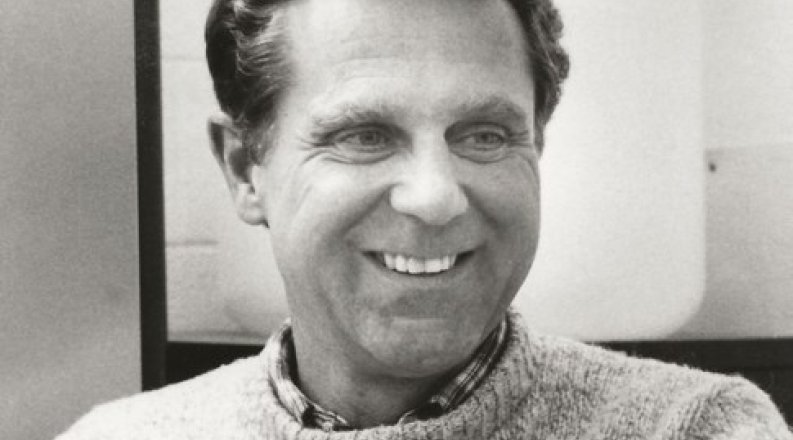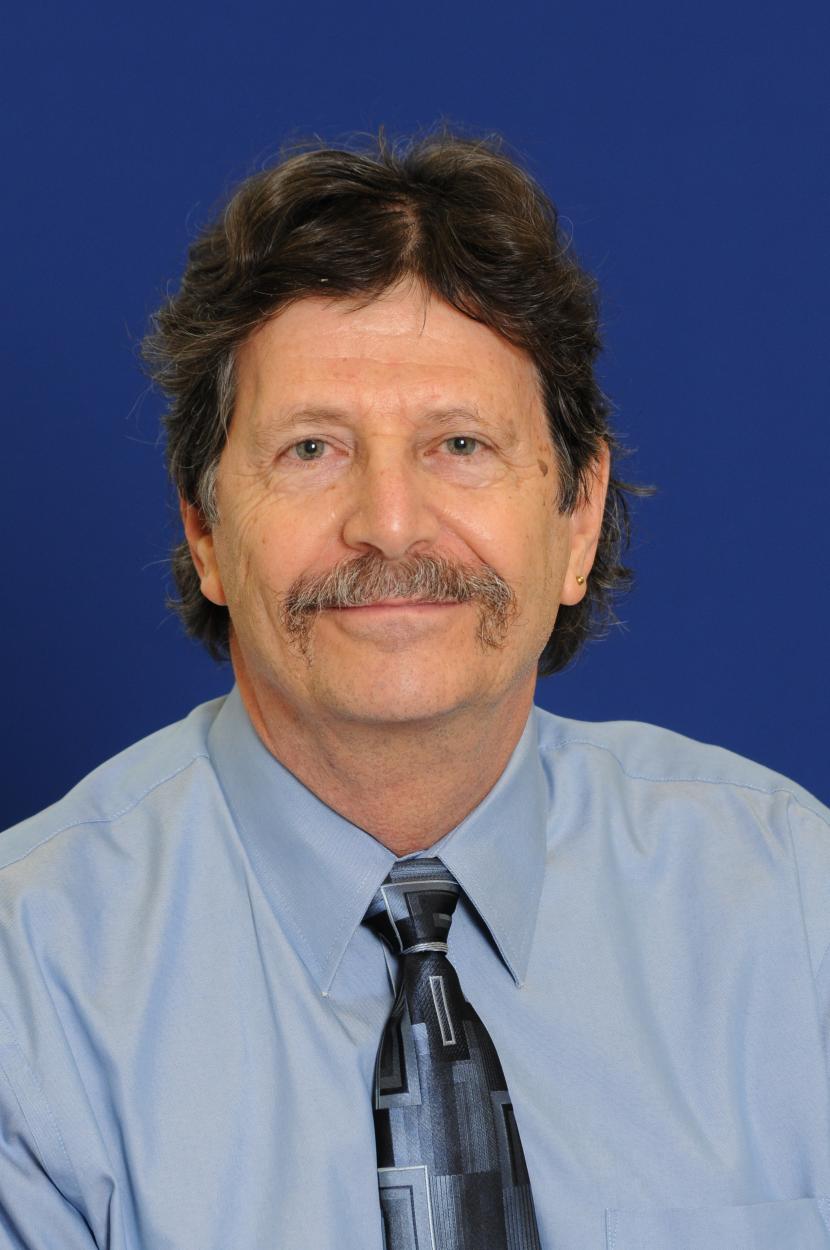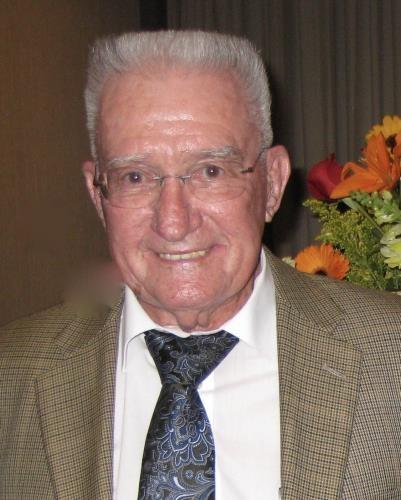William Dunstan gained renown as an oceanographer, but it took him a while to get there.
Following stints as an intelligence officer for the U.S. Navy in Norfolk and working in the engineering and banking fields, he "realized his passion was in the natural sciences," according to his online obituary. He earned advanced degrees in marine biology when he was in his mid-30s and didn't come to Old Dominion University until he was in his mid-40s.
Nonetheless, he made a significant impact during his two decades at ODU, including merging the oceanography and geology programs into one department and helping to establish the Center for Coastal Physical Oceanography (CCPO), a Commonwealth Center of Excellence.
"CCPO became nationally and internationally recognized for its innovative research on the physical oceanography of the coastal ocean and other coastal-related processes," noted oceanography Professor and Eminent Scholar of Ocean and Earth Sciences Eileen Hoffmann, whom Dunstan hired at ODU.
Dunstan, who served as department chair for much of his time at ODU, died on March 13. He was 87.
Dunstan was born on Nov. 4, 1934, in Bayonne, New Jersey. He graduated from Yale University with a B.S. in engineering and from the Naval Intelligence School before earning his M.S. (1967) and doctoral (1969) degrees from Florida State University. He worked at Woods Hole Oceanographic Institution in Cape Cod, Massachusetts, Skidaway Institute of Oceanography in Savannah, Georgia, and as a scientific advisor in Washington, D.C., before being hired by ODU in 1980.
Greg Cutter, professor and Eminent Scholar of Ocean and Earth Sciences, said his background informed his leadership approach at ODU.
"Bill had worked in the scientific consulting world and so his approach to managing an academic department was a bit more businesslike in terms of financial aspects," said Cutter, whom Dunstan hired in 1982.
David J. Burdige, professor and Eminent Scholar of Ocean and Earth Sciences, recalled that the creation of what was then called the Department of Ocean, Earth and Atmospheric Sciences ("or, as many of us called it, the Department of Earth, Wind and Fire") and the CCPO "had major impacts on the future trajectory of the department."
"In the 1980s much of the focus at ODU was on undergraduate teaching, and the oceanography department was one of a handful of departments with a strong research portfolio," said Burdige, who came to ODU in 1985. "As head of the department, Bill navigated us through a university where we looked a little 'different' than many departments on campus. He was, in my opinion, quite successful in these efforts."
As the department grew, Dunstan tried to maintain a personal touch, Burdige added.
"He tried to encourage a more family-like setting with frequent social functions such as Friday coffee and donuts, holiday dinners for all of the department, and as part of our faculty recruiting routine, a faculty reception for each candidate at Bill's house in Virginia Beach," Cutter said.
Dunstan received numerous grants and authored many scientific articles about phytoplankton, which are microscopic plants in the ocean. His obituary noted that his favorite was Skeletonema costatum, which "always put a smile on his face."
Cutter said Dunstan was very good at "culturing" phytoplankton under different physical and chemical conditions.
"My students and postdocs worked with Bill's lab in discovering that all the phytoplankton we cultured produced the smelly gas hydrogen sulfide that then affects the cycling of essential trace metals like zinc and toxic ones like mercury," Cutter said. "We are still studying these processes today, and Bill provided the expertise and knowledge that started it all."
Fred C. Dobbs, marine microbial ecologist and chair of the Department of Ocean and Earth Sciences, is also still passing Dunstan's lessons on to his students.
As an undergrad, Dobbs read a paper Dunstan co-authored while he was at Woods Hole Oceanographic Institution that described how a then-novel technique demonstrated that ammonium, not phosphorus, was the limiting nutrient for phytoplankton in Long Island Sound and the New York Bight.
"The paper was seminal in our thinking about wastewater inputs to coastal waters," Dobbs said. "It was fun to meet 'the man' some 22 years after its publication when I arrived at ODU. Furthermore, the textbook I use for my course in Aquatic Pollution includes his paper as a case study, so before considering its data, I've always bragged about Bill to the students."
Dunstan, who retired from ODU in 2001, was preceded in death by his wife of 49 years, Joan Mercer Dunstan, and his two brothers, Thomas S. Dunstan and James C. Dunstan. He is survived by his five children, William Dunstan Jr. (Rebecca), Stephen Dunstan (Carolina, passed 2019), Patricia Mullin (James), Matthew Dunstan (Megan), and Kathleen Vallent (Brian); and 13 grandchildren, Christine Dunstan, Claire Dunstan, Nina Dunstan, James Mullin IV, William Mullin, Bruce Mullin, Sean Dunstan, Ryan Dunstan, Lily Dunstan, Alex Dunstan, Andrew Vallent, Brandon Vallent and Elizabeth Vallent.
In lieu of flowers, the family asks that memorial contributions be made to the Chesapeake Bay Foundation.
Related News Stories
Longtime Math Professor Steven Atiyah, Who Taught at ODU for Nearly 40 Years, Dies
He wrote eight mathematics textbooks and was known for his amiable and giving nature. (More)
Former ODU Professor Glen Sussman, Who Focused on the Relationship Between Politics and Environmental Policy, Dies at 71
He worked for nearly 30 years at the University and served two terms as chair of the Department of Political Science and Geography. (More)
John Warren Ramsey, a Political Science Professor at ODU for nearly 30 Years, Dies at 91
Former colleagues remembered him as a man who “never put on any airs” and was dedicated to his students. (More)






